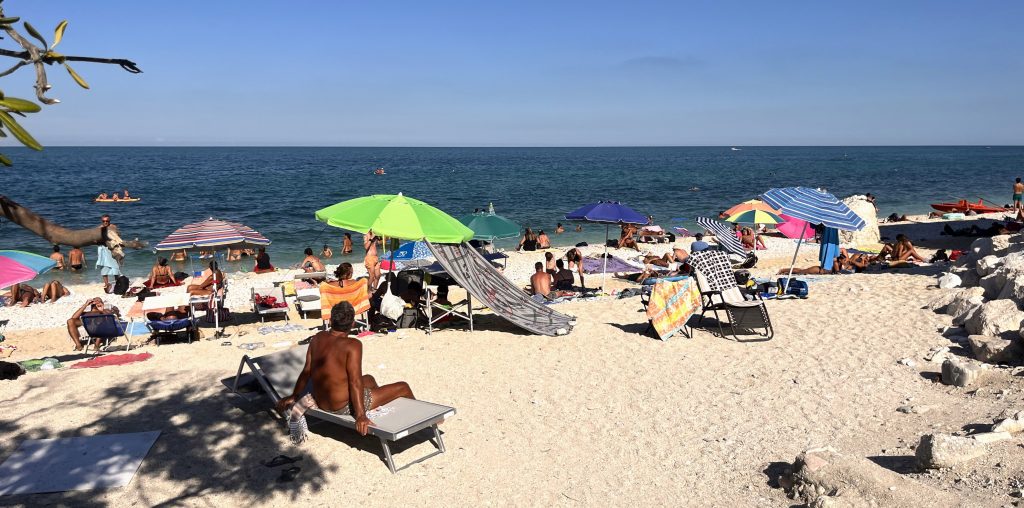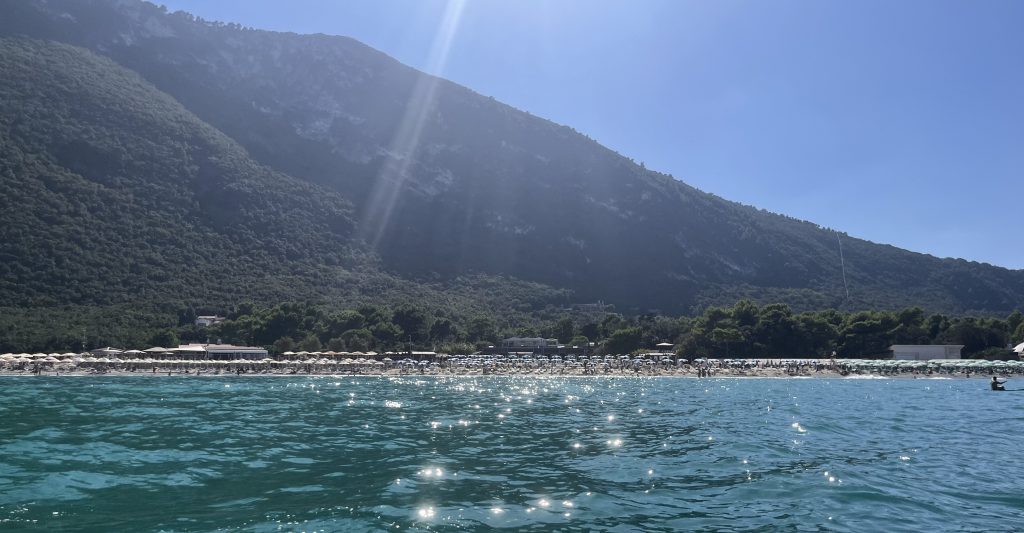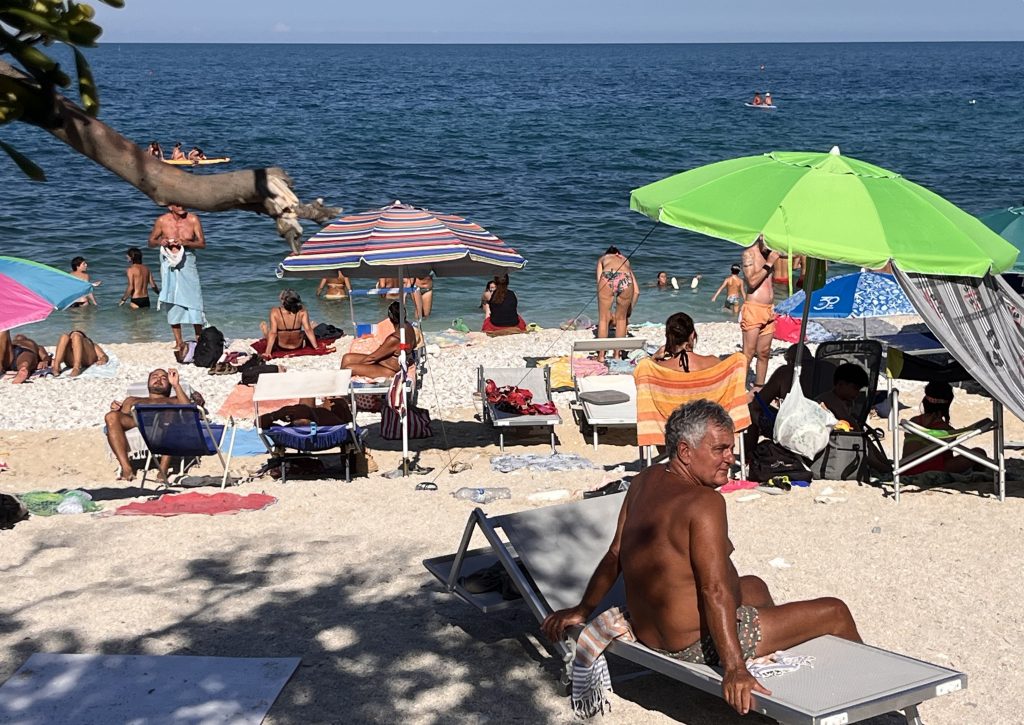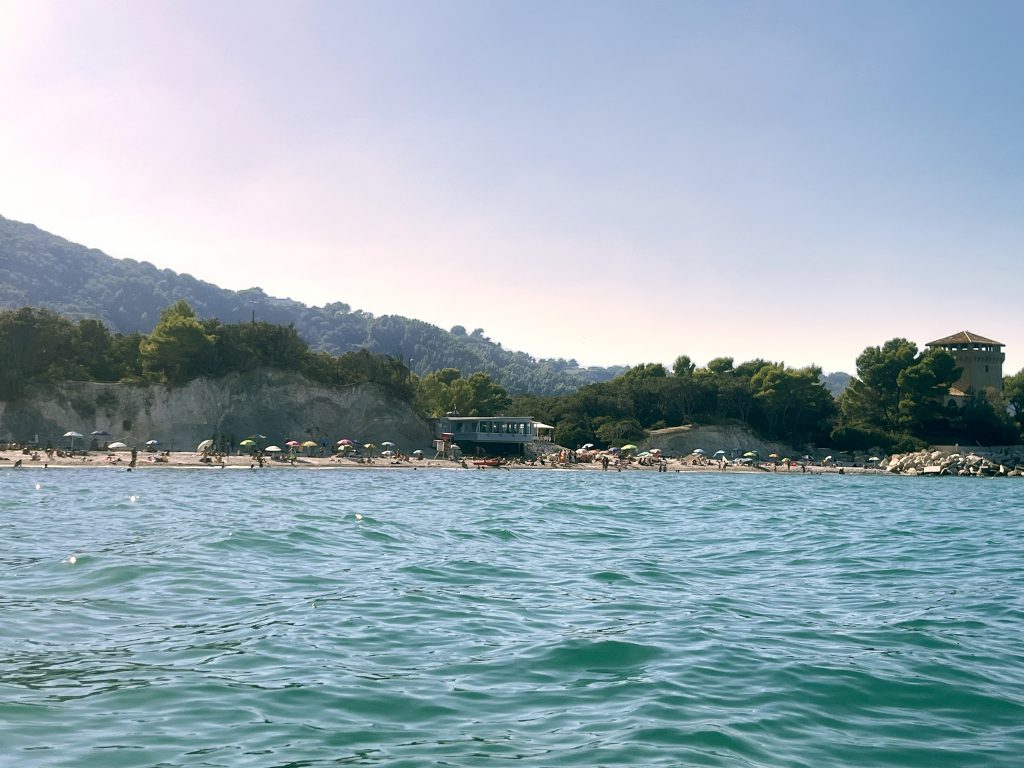
Bystanders in their own home
The paradox of tourist places
Published in October 2025
In the episode “Mountains of Spectacle” of our podcast, we discussed the transformations of mountain territories in relation to the growing phenomenon of overtourism. To better frame the issue, we start from the definition given by Devoto-Oli online(n.d.), which defines the term “overtourism” as the “overcrowding of a destination due to an excessive influx of tourists, creating discomfort for both residents and tourists themselves”. While our podcast’s episode focused on Alpine regions, overtourism is a phenomenon that affects several diverse territories globally.
#Overtourism #Consumption #Non-places
During one of the screenings, organized in collaboration with Il Cinemino in Milan by our collective, this topic was addressed through the documentary Pasturismo, produced by Boschilla. The film reflects on the contradictions and conflicts that characterise highland tourism in Albania, Kosovo, and Montenegro, territories that for a long time remained outside major tourist flows, but that in recent years have been “discovered.” These contexts show how tourism can profoundly, and often irreversibly, reshape the structure, identity, and meaning of places.
A similar reflection also emerges in the paper “The Mountain is Not an Amusement Park”, where Sarah Gainsforth (2024) denounces the flattening of Alpine culture in favor of tourist performance. The mountain imaginary is simplified, packaged, made marketable, and ready for consumption. Local inhabitants are reduced to bystanders in their own territories, while the landscape becomes a stage set to be consumed.
In many mountain areas, places lose their original meaning. Shelters, villages, trails, everything is reconfigured for visitors, at the expense of those who live there daily. The mountain becomes a holiday village. What once was everyday space is emptied of meaning and transformed into a “non-place,” (Augé, 2023) environments designed for temporary use, where locals feel increasingly out of place.


This transformation makes coexistence between tourism and daily life more difficult. As if these places no longer belonged to their inhabitants, but to those who pass through them for just a few hours or days. This is true not only for major destinations, but also for smaller realities. An emblematic case is that of Alpine bivouacs and shelters: once places of silence, care, and shared responsibility, today often taken over by unaware visitors with little respect for basic rules. Local newspapers have reported cases of vandalism, such as in a Grignone shelter where a window was smashed and supplies stolen, sparking outrage in the mountain community. In Valle Vigezzo, behaviours such as leaving trash, unflushed toilets, or open windows have pushed the local Club Alpino Italiano (CAI) section to threaten restrictions on access. These incidents show how disrespect can turn a welcoming place into a fragile one, compromising not only its material structure but also the experience of those who truly value the territory.
Overtourism is a global issue with multiple causes: low-cost flights that make travel accessible, the immense visibility certain destinations gain through digital platforms, and the improved economic conditions of wide sections of the population across different countries. These factors have fueled, globally, a significant increase in tourism, and locally, an unsustainable concentration of visitors in certain places. The most famous cities are gradually emptying of their inhabitants, rents reach prohibitive levels, and public space is transformed into a showcase for visitors. According to ISTAT census data (2011, cited in a local analysis), in Cortina, only 34% of homes are occupied by residents, while 66% are either vacant or used as second homes/holiday rentals. In this context, the recently introduced entrance fee to visit Venice stands as an emblematic sign of the tensions in territories most exposed to overtourism.
Coastal areas experience similar, if not identical, dynamics. Summer brings enormous pressure: overburdened infrastructure, collapsing services, local identities bent to the logic of hospitality, and prices inflated by profit; even a simple spritz becomes unaffordable. Everything is designed for tourism, and more specifically, for tourists.
This is not only about “too many tourists,” but about an economic and cultural system that has turned landscape into product and dwelling into an obstacle to profit.
Social media plays a crucial role: it does not just showcase destinations, but creates simplified visual imaginaries, easily reproduced, instantly desirable, fueling consumption. The tragicomic case of Roccaraso, a ski destination in Abruzzo, is worth mentioning: a promotional post by an influencer attracted 12,000 people in just a few days. A gesture likely made in good faith, but one that caused overcrowding, litter, discomfort, and lasting damage to the locality. A case that reveals the full impact of digital virality.
But social media is not solely to blame. At the roots are absent public policies, urban planning subjugated to market interests, and cultural narratives that have stopped valuing everyday life in favor of disposable experiences. In Italy, ISTAT data show that in many tourist cities, more than one-third of housing stock is “available” (vacant, second home, or short-term rental). The tourism economy has become an end, supported by local administrations investing in mega-events, attractive infrastructure, and promotional campaigns, without asking who pays the price of hospitality. Events such as the upcoming 2026 Milan-Cortina Olympics, the Venice Biennale, or summer festivals in Gallipoli become central to public communication and investment, showing how territory is promoted mainly as a “stage” for quick experiences rather than as a lived places (Rabbiosi, 2018). As a result, those who truly inhabit these territories are pushed to the margins, rendered invisible.


So, how can we rebuild a healthier relationship with places?
First, we need a change of perspective: slower, more attentive. An education in perception that goes beyond the eye, involving body, time, and ethics. To slow down does not simply mean “to take it easy,” but to choose different practices, longer stays that support local life instead of “hit-and-run” consumption; moving on foot, by bike, or by public transport to reduce environmental impact; activities that intersect with the daily life of inhabitants, from markets to neighborhood festivals (Pileri, 2020). In this sense, slow tourism is not just a cultural approach but also a political one: it means regulating short-term rentals to defend the right to housing, reinvesting tourist revenues in public services, redistributing flows across time and space to avoid overloading certain places and seasons (Gardner, 2009).
Experience, then, becomes about restoring value to presence, connection, and reciprocity between residents and visitors. It is cultural work, but also political. Another idea of hospitality is possible: not as the subordination of territory, but as coexistence between those who live and those who visit. A way of inhabiting that does not erase but listens, recognizing the rhythms and stories of those who care for places every day.